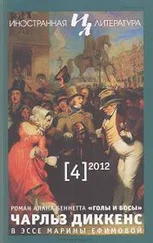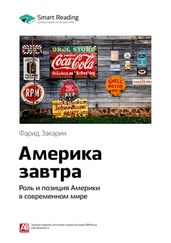О преимуществах многостороннего подхода и его особенностях см. Joseph S. Nye, Jr., «The Paradox of American Power: Why the World's Only Superpower Can't Go It Alone» (New York: Oxford University Press, 2002).
U.S. Department of Transportation, Office of the Assistant Secretary for Aviation and International Affairs, «U.S. International Air Passenger and Freight Statistics, June 2000», released February 2001, p. 5. Available at: http://ostpxweb/ http://ostpxweb.ost.dot.gov/aviation/international-series
О других способах повысить значимость международных институтов см.: Joseph S. Nye, Jr., «Globalization's Democratic Deficit: How to Make International Institutions More Accountable», Foreign Affairs, vol. 80, no. 4 (July — August 2001), p. 2–6.
Cited in Cronin, «Community Under Anarchy», p. 61, 56.
Cited in Drew R. McCoy, «The Elusive Republic: Political Economy in Jejfersonian America» (Chapel Hill: University of North Carolina Press, 1980), p. 12.
Cited in Michael J. Sandel, «Democracy's Discontent: America in Search of a Public Philosophy» (Cambridge, Mass.: Harvard University Press, 1996), p. 147.,
Cited ibid., p. 126.
Cited ibid., p. 146.
Cited in McCoy, «The Elusive Republic», p. 102.
Cited in Sandel, «Democracy's Discontent», p. 163.
Cited ibid., p. 176–177.
Cited ibid., p. 179.
Thomas R. Hietala, «Manifest Design: Anxious Aggran dizement in Late Jackson-ian America» (Ithaca: Cornell University Press, 1985), p. 102–104.
Cited in Sandel, «Democracy's Discontent», p. 216.
Cited ibid., p. 218.
Stephen Jay Gould, «Time's Arrow, Time's Cycle: Myth and Metaphor in the Discovery of Geological Time» (Cambridge, Mass.: Harvard University Press, 1988), p. 51.
Эта концептуализация исторических перемен представляет собой синтез нескольких интеллектуальных традиций. Наиболее влиятельными работами в этих традициях являются следующие. А) О важности способов производства для формирования политических и социальных институтов: Talcott Parsons, «The Evolution of Societies» (Englewood Cliffs, N.J.: Prentice-Hall, 1977); Ernile Durkheim, «The Division of Labor in Society» (New York: Free Press, 1984); Karl Marx, «Capital: A Critical Analysis of Capitalist Production», trans. Samuel Moore and Edward Aveling (London: Allen & Unwin, 1971); and Ernest Gellner, «Nations and Nationalism» (Ithaca: Cornell University Press, 1983). Б) Он циклической и эволюционной природе истории: Gould, «Time's Arrow, Time's Cycle»; George Modelski, «Long Cycles in World Politics» (Seattle: University of Washington Press, 1987); Robert Gilpin, «War and Change in World Politics» (New York: Cambridge University Press, 1981). В) О влиянии перемени в обществе на способ производства: William H. McNeill, «The Rise of the West: A History of the Human Community» (Chicago: University of Chicago Press, 1963); and William H. McNeill, «The Pursuit of Power: Technology, Armed Force, and Society Since A.D. 1000» (Chicago: University of Chicago Press, 1982). Подробный разбор литературы по данным темам содержится в работе Stephen К. Sanderson, «Social Transformations: A General Theory of Historical Development» (Cambridge, Mass.: Blackwell, 1995). См. также Jared Diamond, «Guns, Germs, and Steel: The Fates of Human Societies» (New York: Norton, 1999).
Рисунки З и 4 схематичны и не опираются на точную хронологию исторических дат. Ведь эры не имеют строгих границ, перетекают одна в другую, при этом часть мира развивается быстрее, а часть — медленнее. Следует отметить, что идентификация исторических периодов и их протяженности ни в коей мере не является общепризнанной; споры между историками, антропологами, социологами и специалистами из других областей знания продолжаются по сей день. Мы лишь намечаем логику исторического развития и не пытаемся предложить однозначный ответ на столь сложный вопрос.
Анализ исторических перемен см. в книге Sanderson, «Social Transformations».
См. Edward Gibbon, «The History of the Decline and Fall of the Roman Empire», with introduction, notes, and appendices by J. B. Bury, vol. 2 (New York: AMS Press, 1974), p. 311–317.
См. Benedict Anderson, «Imagined Communities: Reflections on the Origin and Spread of Nationalism» (New York: Verso, 1991).
Некоторые историки и социологи полагают, что наступление коммерческого капитализма знаменует собой конец аграрной эры. См., к примеру, Sanderson, «Social Transformations», chap. 5.
Хотя коммерциализм начал распространяться в 1500-х — 1600-х годах, лишь с осуществлением промышленной революции доминирующие социально-политические институты аграрного общества уступили место новым структурам. Поэтому в данной книге восемнадцатое столетие рассматривается как ключевой момент истории.
В. R. Mitchell, International Historical Statistics: Europe, 1750–1993» (London: Macmillan, 1998), p. 934; and David S. Landes, «The Unbound Prometheus: Technological Change and Industrial Development in Western Europe from 1750 to the Present» (New York: Cambridge University Press, 1969), p. 187–188.
Индустриальный способ производства изначально породил государства многих типов, включая авторитарные и социалистические. Большинство этих государств, впрочем, столкнулось в XX веке со значительными трудностями и было вынуждено двинуться в направлении демократии и капитализма. О влиянии индустриального капитализма на социальные и политические институты см.: Ralf Dahrendorf, «Class and Class Conflict in Industrial Society» (Stanford: Stanford University Press, 1959); Clark Kerr et al., «Industrialism and Industrial Man: The Problems of Labor and Management in Economic Growth» (Cambridge, Mass.: Harvard University Press, 1960); Anthony Giddens, «Sociology: A Brief but Critical Introduction» (New York: Harcourt Brace Jovanovich, 1982); and F.A. Hayek, «The Fatal Conceit: The Errors of Socialism» (Chicago: University of Chicago Press, 1988).
Читать дальше









